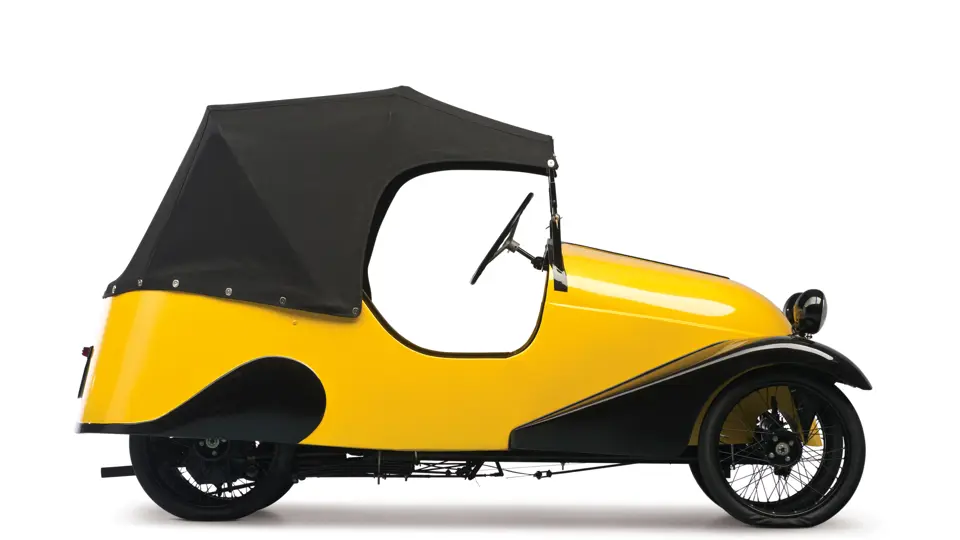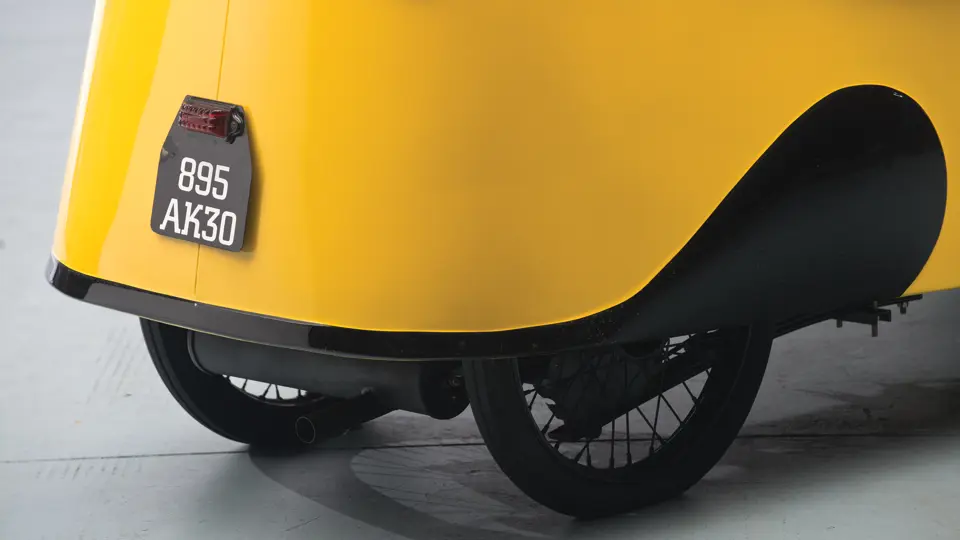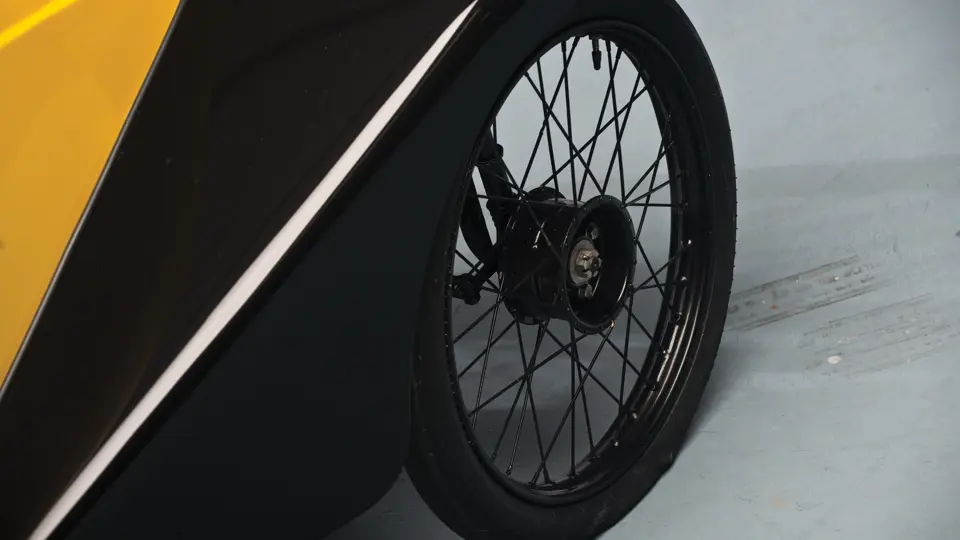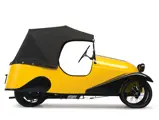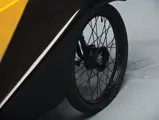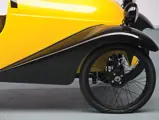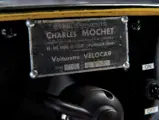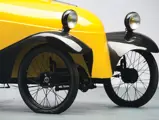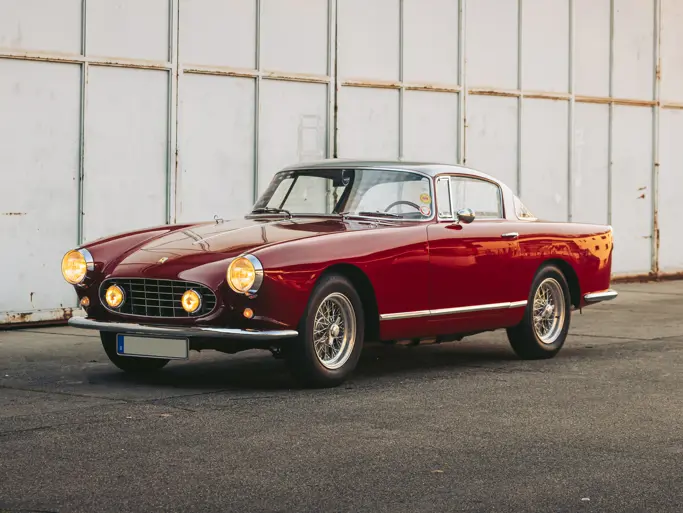Outstanding presentation and quality.
SPECIFICATIONS
Manufacturer: Charles Mochet
Origin: Puteaux, France
Production: 1,250
Motor: Zurcher 1-cyl, 2-stroke
Displacement: 125 cc
Power: 3.5 hp
Length: 7 ft. 10 in.
Identification No. 2695
The products of Georges Mochet were based on a philosophy of minimalism, to which he remained faithful all his life, espousing human-powered vehicles well into his eighties. “If it isn’t there, it can’t break,” he would say. He followed in his father’s footsteps, extending and expanding the concept of the ultra-lightweight pedal-powered cyclecar. This included the splitting of the four-wheeled Velocar in two to create the Velo-Velocar, or recumbent bicycle.
Small motors were being fitted to the pedal cars even before the war, and the practice was continued afterwards, this time by the factory, and the result was called the Velocar Type H. The post-war automobile landscape was more competitive in the field of small cars, and Mochet entered the fray with his first non-pedal-powered car with a steel body instead of wood, the Type K. The steel body was formed from folded, angular panels, which were not well received, and the later examples got much more pleasing, rounded coachwork.
This late Type K body turned out to be a preview for the “classic” Mochet, the CM-125 Luxe, which was produced in the largest numbers of all the Mochet cars. It basically used the same chassis and motor as the Type K, but now it had an improved suspension in the front and rear, giving a more comfortable ride. The bodywork had now achieved what would be its final roadster form, with a pleasing nose shape flanked by a proper pair of full fenders. The earliest cars had a pair of horizontal ribs pressed into the tail, but these were soon replaced by an S-shaped pressing echoing the front fenders. Likewise, the pressing on the front hood changed from pointed to more rounded. The floor pedals changed from circular pads to a flat ribbon style. The front wheels were not detachable from their hubs at first, so a spare wasn’t provided, but they were made removable and a spare wheel was provided after 1951. The steering wheel changed from a four-spoke to a two-spoke and finally to a three-spoke wheel in 1953.
The little Zurcher motor needed an extremely precise run-in period for the first 500 miles, with the time broken into 11 exact intervals of driving and cooling down, whereupon it would finally deliver its 3.5 horsepower. This car has been restored to a high standard in an attractive yellow and black two-tone, which follows the bodywork pressings.

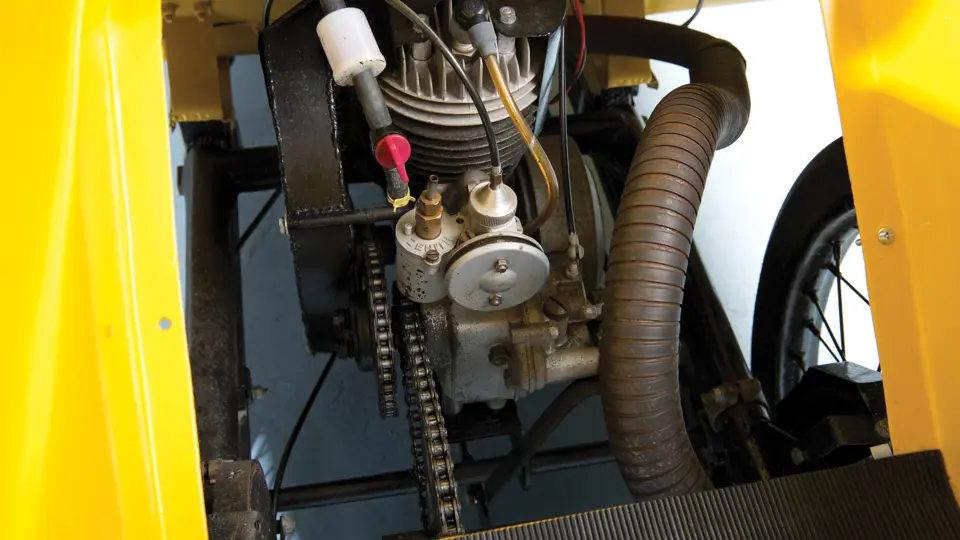



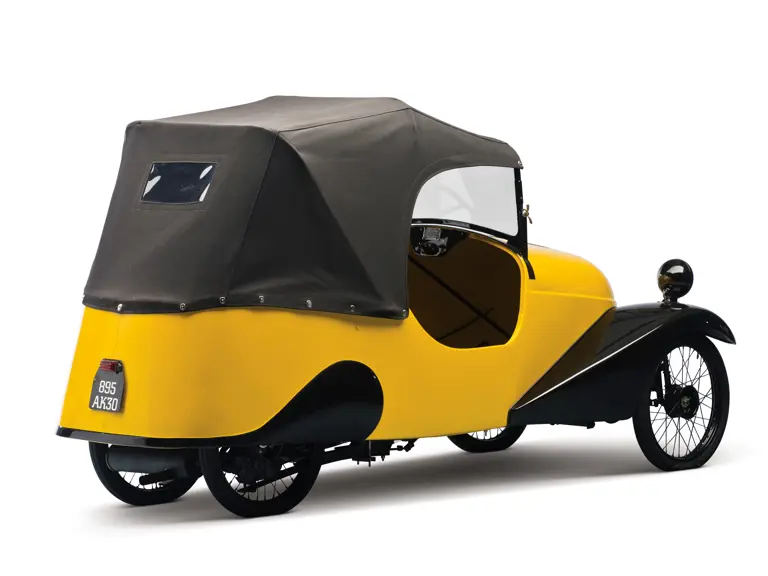
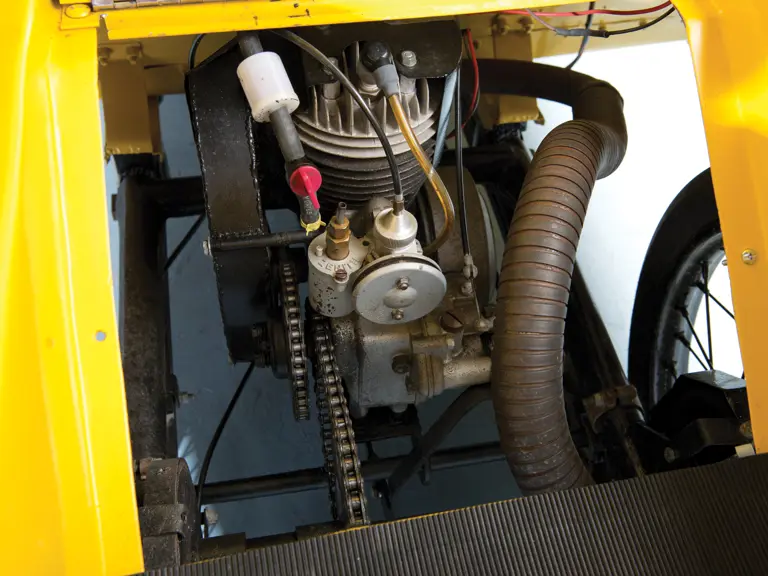
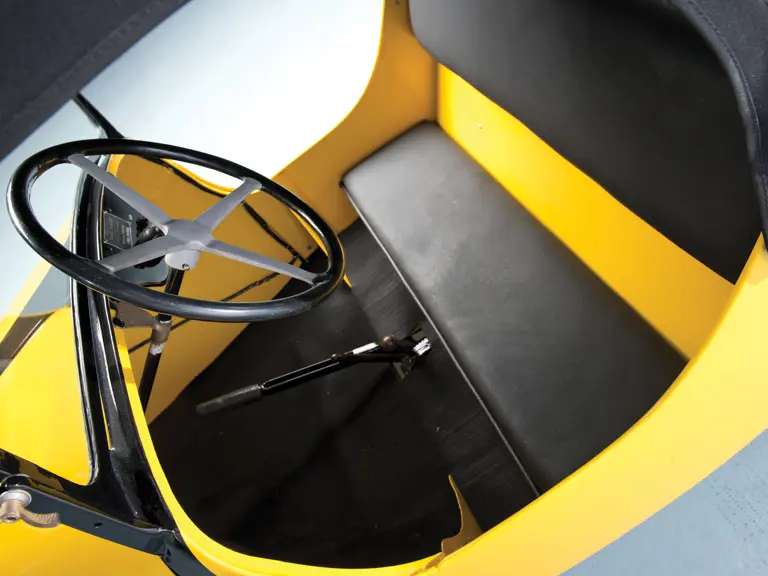

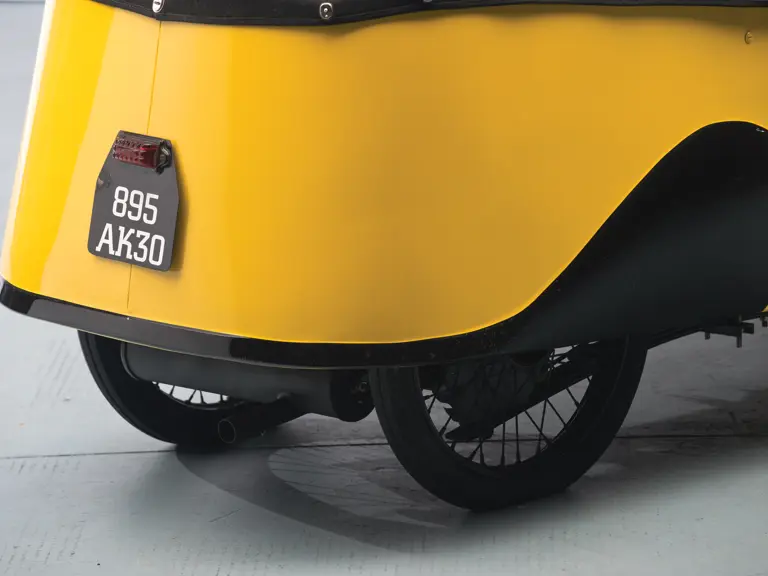

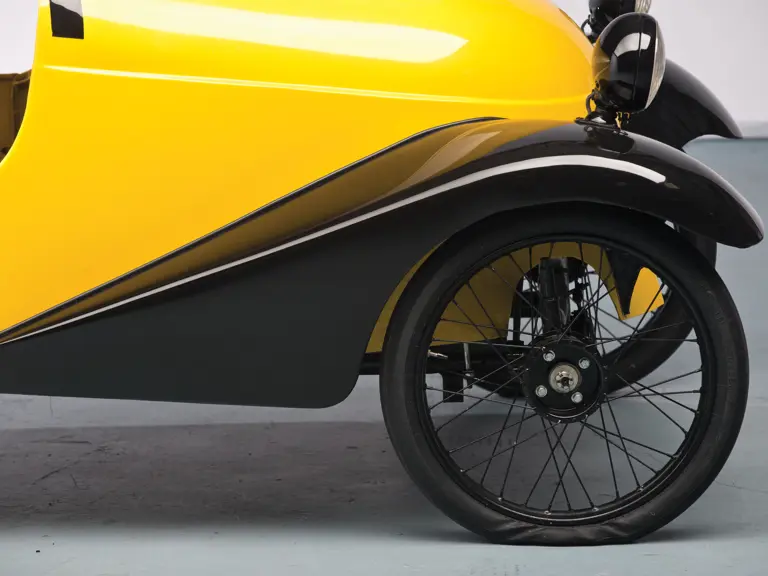
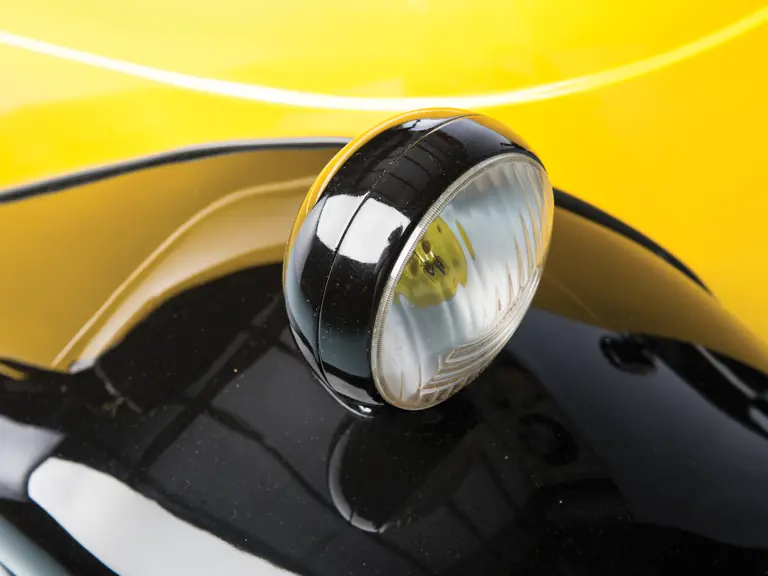


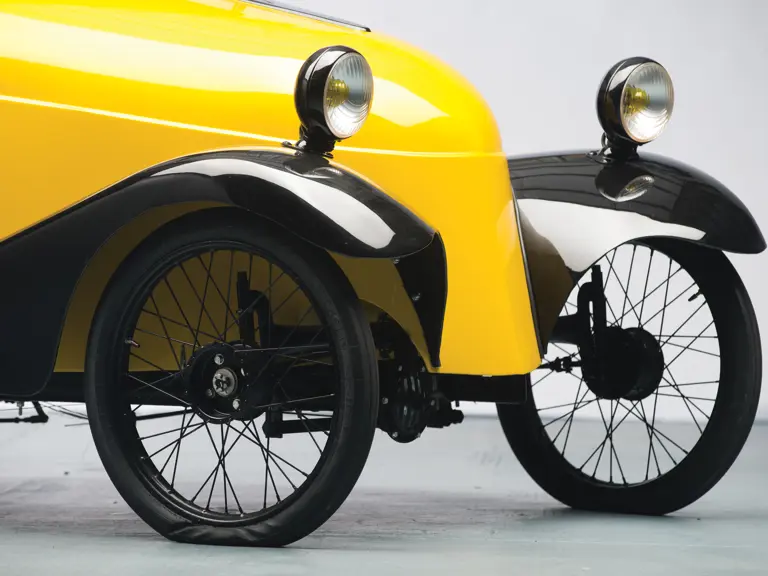
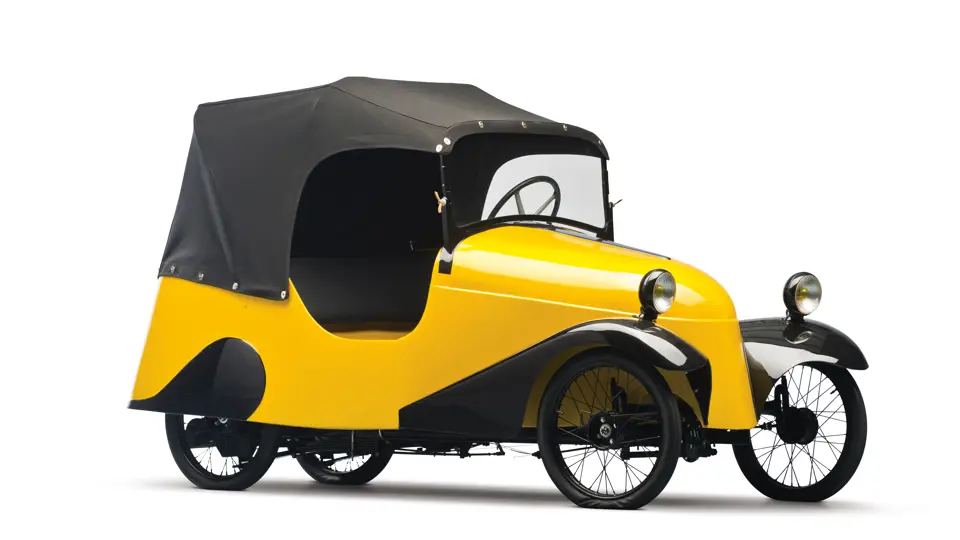
 | Madison, Georgia
| Madison, Georgia
